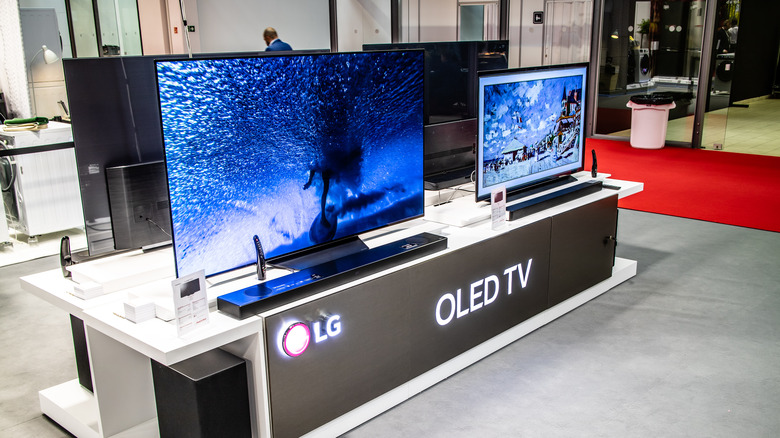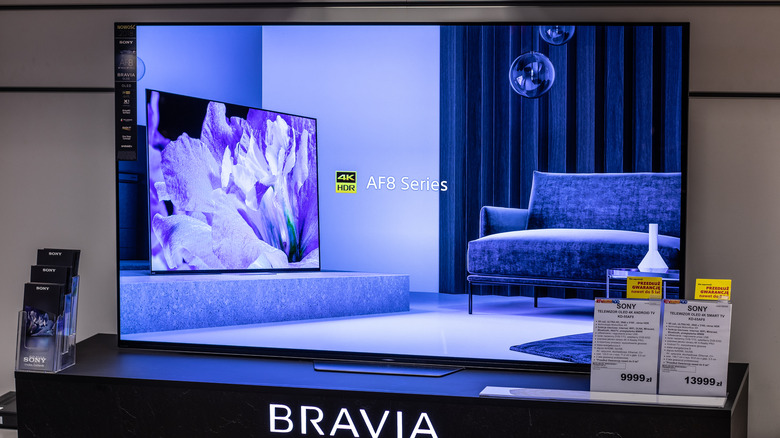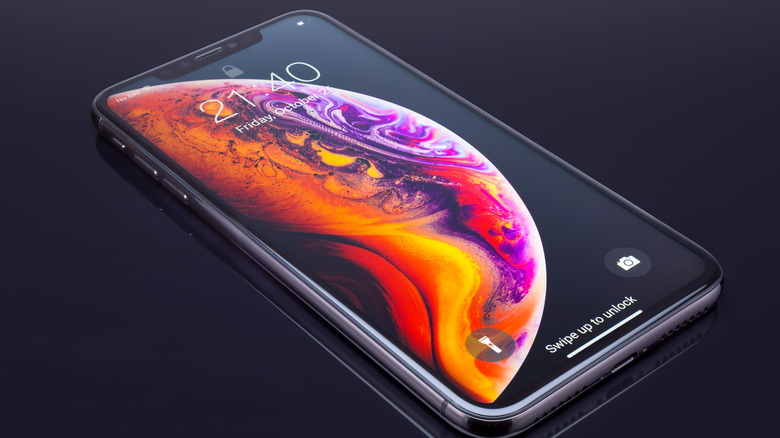How To Fix OLED Screen Burn-In
OLED TVs produce exceptionally rich colors and deep blacks, due to the self-lit nature of each pixel. However, OLEDs come with one major drawback: screen burn-in, which is when an OLED TV's organic pixels are rendered permanently unable to display anything other than a specific image. Burn-in can occur when the same image is displayed on a screen for too much time without much or any variation, and it can be caused by an interface element in a video game or a static news reel on a TV station. This is a bit different from image retention, in the sense that burn-in is completely permanent, whereas image retention should be able to be reversed by lowering the brightness on your TV or activating any anti-burn-in features available on your device. Image retention could also be reversible through regular use, just as long as it hasn't yet advanced to burn-in.
It's important to remember that once burn-in occurs, there's no way to fully reverse it. You may need to replace your entire panel or device in order to resolve the problem. At best, you can employ preventative measures to stop it from happening in the first place. That said, there are a few ways that you can prevent the advancing of burn-in on your OLED display.
How to prevent burn-In on an LG OLED TV
LG has traditionally led the charge with its C-series OLED TVs, but those are just as capable of experiencing burn-in as any other variety of television. Modern LG OLED TVs are a bit more equipped to deal with this, by the array of anti-burn-in features such as local dimming, ABL (automatic bright level), and panel refreshing that can help keep your OLED from displaying a bright image for too long.
However, you can also do a few things to prevent burn-in on your LG OLED screen, including setting a timer to turn the TV off when it isn't being used. Most burn-in occurs when a TV is left on for an extended amount of time, so simply having it shut off after a few hours can be enough to prevent burn-in. You can set a timer by navigating to your Settings menu, then to General, then Additional Settings, then Eco Mode. From here, you can activate an automatic power-off timer set to whichever interval you'd prefer.
How to prevent burn-in on a Sony OLED TV
Sony offers a detailed guide on how you can prevent burn-in on its OLED TVs, but it doesn't differ a ton from what you'd need to do when preventing burn-in on any other modern OLED panel. As with our LG OLED tips, the best way you can prevent burn-in is by limiting the amount of time your screen is powered on.
However, Sony also suggests a few other tips that could be useful. For example, you can activate a screen saver that appears after a set number of minutes of inactivity by going to Settings, then Device Preferences, then Screen Saver. Sony also offers similar panel refresh and pixel shift features as LG, and those can always be useful to prevent burn-in. Finally, you may choose to calibrate your panel so that your screen's image is enhanced during dark scenes. Sony suggests that this function can also prevent image retention and burn-in.
How to prevent burn-in on an OLED Smartphone
Smartphones, such as iPhones, generally use an AMOLED display. Like regular OLED screens, these may also be susceptible to burn-in, however, these are not quite as susceptible to burn-in as the aforementioned OLED TVs. You can get away with regular usage habits on most phones without ever experiencing burn-in. But there are still a few tips you might want to follow, just to make sure you're completely safe.
Since burn-in generally happens when a screen is too bright, you may want to keep a dark wallpaper background on your phone. This way, even if the phone does idle, there's less of a chance for image retention to occur. You can also keep your screen brightness lower and opt to use full-screen mode when viewing video content. Dark themes in web browsers can also make a difference, and you should also generally set your phone's screen to turn off automatically after a set period of time.
How to prevent burn-in on a Nintendo Switch OLED
The Nintendo Switch OLED is also at risk of burn-in, especially if you leave it running in bright environments for long periods of time. However, according to TechRadar, it's not going to be a significant issue unless you leave your Switch OLED on for over 3,600 hours.
But there's a direct preventative measure offered by Nintendo when playing any Nintendo Switch device on an OLED TV, and it sounds like the Switch's system settings can supposedly reduce the risk of burn-in on your TV. Simply navigate to the System Settings menu, then to TV Settings. From here, toggle the Screen Burn-In Reduction setting.
Other than that, you may want to use the Nintendo Switch's dark background when navigating the home menu. This can be activated by navigating to System Settings, then Themes. Selecting the dark theme should make the menu a lot easier on the eyes, and it should reduce stress on your OLED display.




